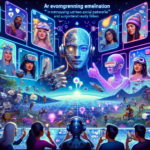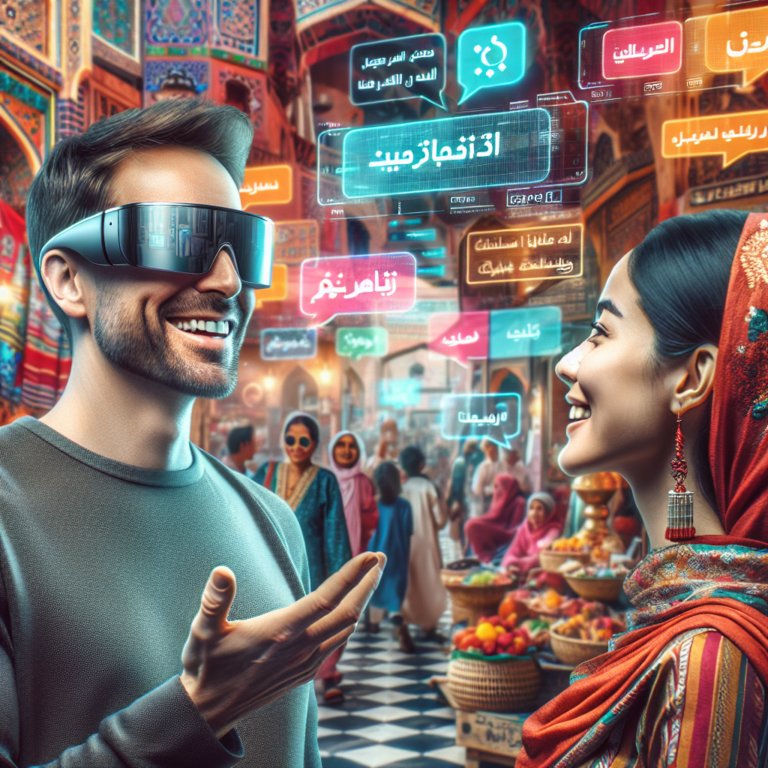The Future of Communication: What If Smart Glasses Translated Languages in Real Time? 👓🌍
Introduction: Bridging the Language Barrier
Imagine walking through a bustling market in Tokyo, exchanging friendly banter with a vendor, or enjoying a lively discussion in a café in Paris—all without worrying about the language barrier. This vision is not just a dream. With the advent of smart glasses equipped with real-time language translation technology, it could soon become a reality. In this post, we explore how these innovative devices could revolutionize the way we communicate across cultures.
What Are Smart Glasses?
Smart glasses are wearable technology that looks like regular eyewear but comes packed with features such as augmented reality (AR), internet connectivity, and advanced sensors. These glasses can overlay digital information onto the real world, offering a unique and interactive experience. Imagine combining this with real-time translation capabilities!
How Real-Time Language Translation Could Work
Smart glasses for real-time language translation would bring together several cutting-edge technologies:
- Speech Recognition: The glasses would utilize advanced algorithms to identify and transcribe spoken words instantly.
- Language Processing: Following transcription, the glasses would employ complex language processing capabilities to translate the text accurately.
- Display Functionality: Finally, the translated text would be projected onto the lenses, allowing users to read it without interrupting the flow of conversation.
Features and Benefits of Smart Glasses with Translation Capabilities
Let’s delve deeper into the potential features these smart glasses could offer to enhance our communication experiences:
1. Instantaneous Communication
With real-time translation, conversations could flow seamlessly. No more pauses to consult a translation app or dictionary; communication would feel natural and fluid.
2. Cultural Exchange Made Easy
Traveling or living abroad would become a more fulfilling experience as you could engage with locals in their native tongues. This would foster deeper cultural connections and understanding.
3. Enhanced Learning Opportunities
Learning a new language could be transformed with this technology. By interacting with native speakers and reading translated material simultaneously, learners would absorb knowledge more effectively.
4. Business and Networking
In today’s global economy, building international partnerships is crucial. Smart glasses could facilitate smoother negotiations and collaborations, breaking down major communication barriers.
5. Accessibility Improves
Smart glasses could significantly improve accessibility for individuals who are hearing impaired or have difficulty communicating in their native language, providing them with tools to engage more fully in conversations.
The Technology Behind Smart Glasses
Several technologies will converge to bring this vision to life:
1. Machine Learning
Machine learning algorithms would be trained on vast datasets to improve translation accuracy and context understanding constantly.
2. Neural Networks
Utilizing neural networks, the glasses would adapt to users’ speech patterns and preferences, enhancing personalized experiences.
3. Augmented Reality Integration
AR capabilities would enhance user experience by overlaying translated text visually in real-world settings, making it easier to follow along in conversations.
Challenges to Overcome
While the prospects of smart glasses are thrilling, a few hurdles need addressing:
1. Accuracy and Context
Languages often rely heavily on context, idioms, and cultural nuances. Ensuring that the translations are not only accurate but also contextually appropriate will require continuous refinement.
2. Privacy Concerns
With voice recognition and translation technology, privacy is a legitimate concern. Users will need reassurance regarding the handling and storage of their conversations.
3. User Interface Design
The interface must be intuitive and user-friendly to avoid overwhelming users with too much information at once. Developers will need to prioritize simplicity without sacrificing functionality.
The Impact on Society
The introduction of smart glasses with real-time translation could have profound societal impacts:
1. Global Collaboration
Businesses could explore new markets more efficiently and collaborate internationally as language barriers diminish.
2. Enhanced Tourism
Tourism could thrive as travelers interact more easily with locals, enriching their travel experiences and benefiting economies worldwide.
3. Promoting Inclusivity
Integrating this technology into everyday life can lead to more inclusive environments where language is not a barrier to participation.
The Future of Communication: A Game-Changer?
The potential for smart glasses to transform communication is immense. With ongoing advancements in AI, machine learning, and AR, the dream of effortless multilingual conversations seems increasingly achievable. Imagine a world where tourists can mingle with locals, business leaders can negotiate without translators, and students can learn languages in an immersive environment. The future is bright, and we are on the brink of a new era in global communication.
Final Thoughts
As technology evolves, so does the way we connect with each other. Smart glasses with real-time language translation could be the conduit to a more connected, understanding, and inclusive world. The question remains: Are we ready to embrace this transformative technology?




0 Comments